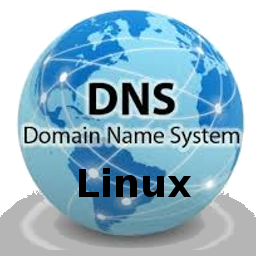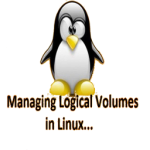Archives
now browsing by author
How to Remove/Delete Old Kernel Images on Debian/Ubuntu Linux Systems

Suddenly, my Ubuntu update failed, and after checking my machine, I found that /boot partition is full, which caused this issue. I noticed that old kernel still exists in my system. In this mini post, your will find the answer for these question on Debian/Ubuntu Linux systems: Why doesn’t UbuntuRead More

How to Install and Configure Master-Slave DNS Server on CentOS 7 Linux Systems

In this post, we will show you how to install and configure a master-slave DNS server on Linux systems (RPM Family “Redhat /CentOS /Scientific Linux 7”). As a system administrator you will need to setup a DNS server to resolve domains to it’s corresponding IPs. You can setup the DNSRead More

How to Install and Configure Master-Slave DNS Server on CentOS 6/5 Linux Systems

In this post, we will show you how to install and configure a master-slave DNS server on Linux systems (RPM Family “Redhat /CentOS /Scientific Linux 6/5”). As a system administrator you will need to setup a DNS server to resolve domains to it’s corresponding IPs. You can setup the DNSRead More

What is the Differences between A Web Server and An App Server

When you research how to deploy your Rails app, you’ll see a lot of names: Apache, Unicorn, Puma, Phusion Passenger, Nginx, Rainbows, and many more. They all seem to fit under the “deploying Rails” category of software, but there’s a key difference between them. Some are “web servers,” and othersRead More

Introduction to LVM (Logical Volume Manager)

LVM stands for Logical Volume Management. It is a system of managing logical volumes, or filesystems, that is much more advanced and flexible than the traditional method of partitioning a disk into one or more segments and formatting that partition with a filesystem. LVM is the Logical Volume Manager providedRead More

How to Use Wireshark to Identify and Detect Your Network Abuse

Wireshark is the Swiss Army knife of network analysis tools. Whether you’re looking for peer-to-peer traffic on your network or just want to see what websites a specific IP address is accessing, Wireshark can work for you. We’ve previously given an introduction to Wireshark. and this post builds on our previousRead More

Wireshark the Most Important Killer Tricks

Wireshark has quite a few tricks up its sleeve, from capturing remote traffic to creating firewall rules based on captured packets. Read on for some more advanced tips if you want to use Wireshark like a pro. We’ve already covered basic usage of Wireshark, so be sure to read ourRead More

How to Capture, Filter and Inspect Packets with Wireshark

Wireshark, a network analysis tool formerly known as Ethereal, captures packets in real time and display them in human-readable format. Wireshark includes filters, color-coding and other features that let you dig deep into network traffic and inspect individual packets. This tutorial will get you up to speed with the basicsRead More

Howto switch to another ruby version (temporarily, per project, or globally) using rbenv

As systems engineer, who setups and maintains different servers running Ruby On Rails applications ” testing, staging, and production servers”, I’ve many ruby versions installed on my machine and I’ve to switch between them when deploying new code of ROR apps to any of my servers. Why I’ve to switchRead More

How to remove/delete CTRL-M (^M) characters from text files in Linux and UNIX systems

In this mini post, I’ll show you some methods/options to remove CTRL-M (^M) blue carriage return characters from a file in Linux and UNIX systems. Here’s you’ll find the exact answer for the following questions: How to convert plain text files in DOS/MAC format to UNIX format? Newly created SSLRead More




